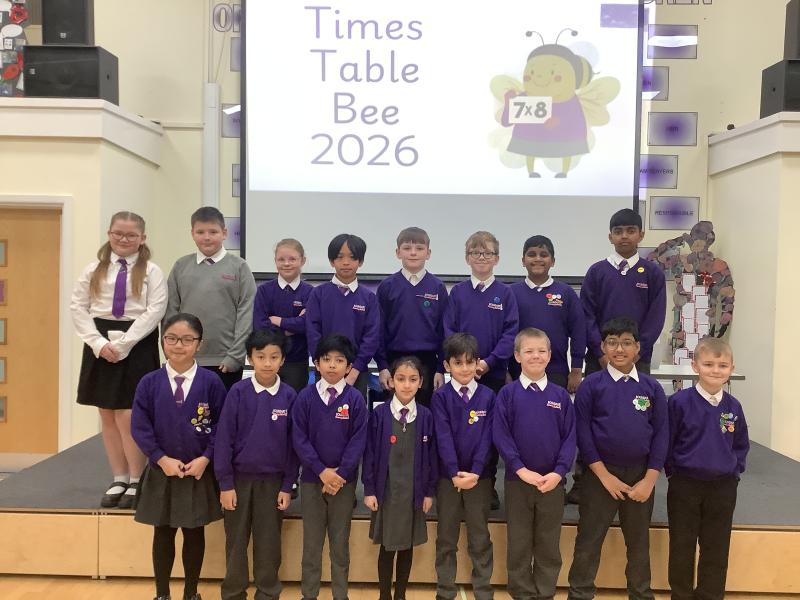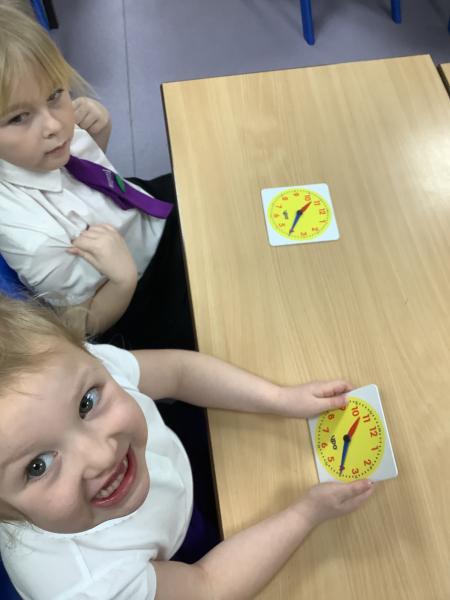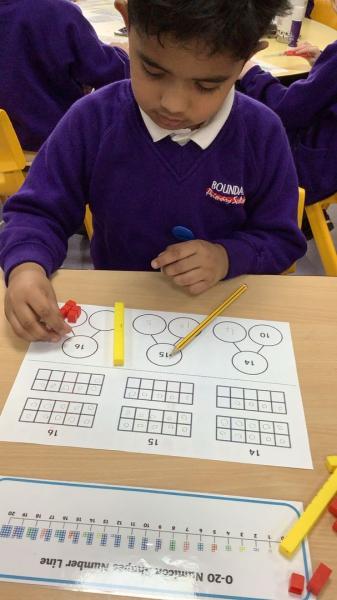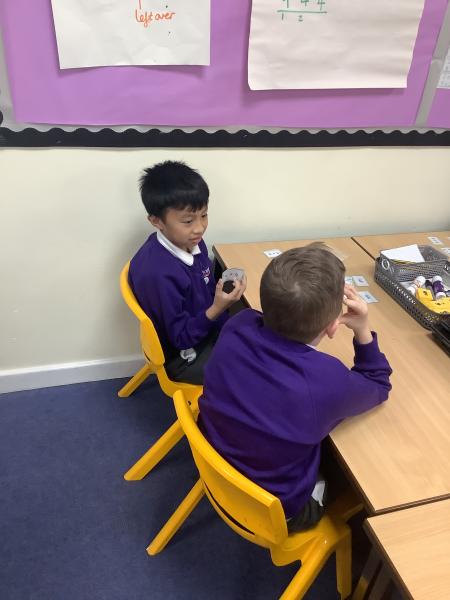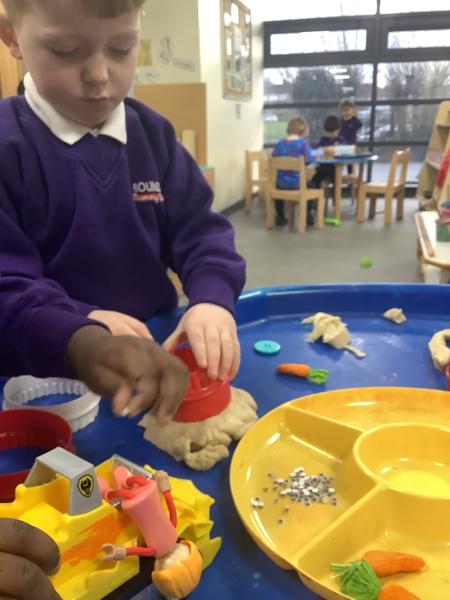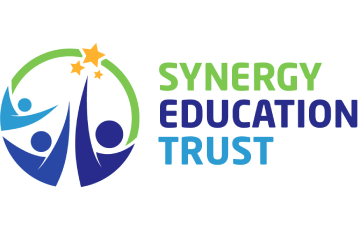Maths 2025 - 2026
‘Good mathematics is not about how many answers you know… It’s about how you behave when you don’t know’ – Anonymous
“A high-quality mathematics education provides a foundation for understanding the world, the ability to reason mathematically, an appreciation of the beauty and power of mathematics, and a sense of enjoyment and curiosity about the subject.” (National Curriculum 2014)
At Boundary, we encourage children to not only work fluently but to also be confident problem solvers. We encourage and promote multiple methods to solving problems, providing our pupils with self- confidence and resilience. Through the teaching of ‘mastery’, we ensure that children gain a deep and secure understanding of key mathematical concepts at each stage of their learning.
For a detailed understanding of the Intent, Implementation and Impact of the teaching of Maths at Boundary, please read the document below.
Mathematics - Key Instant Recall Facts (KIRFs)
To develop fluency and mental maths recall, we practice KIRF’s (Key Instant Recall Facts) throughout school.
KIRF’s are a way of helping your child to learn important maths facts that need to be recalled quickly. Having rapid recall of these facts will support your child in meeting their full potential in mathematics.
KIRF’s support the development of mental maths skills which are vital in becoming a successful mathematician. They are also particularly useful when moving onto written calculations: addition; subtraction; multiplication and division.
KIRF’s contain number facts such as number bonds and times tables that need constant practise in order for children to be able to recall them quickly and accurately.
Each half term, children focus on a KIRF to practise and learn at home. For your child to become more efficient in recalling these facts, they need to be practised frequently and for short periods of time. They are not designed to be a time-consuming task, they can be practised anywhere – in the car, on the bus, walking to school etc. The key is regular practice – little and often – will help children to retain these facts.
The KIRF’s are sent home with key vocabulary and ideas to support this learning at home and your child’s teacher will also be able to offer further suggestions if needed. The KIRF’s are also be available on the school website.
Throughout the half term, KIRF’s will also be practised within school and your child’s teacher will assess whether they have been retained.
These documents can be downloaded using the button at the top of this page.
Times Tables Rock Stars
As well as targeted teaching of times tables in classes, we also use Times Tables Rock Stars from Year 2 to Year 6, to embed these facts and develop quick recall. To encourage engagement, we run weekly competitions with the winners announced in our celebration assembly on a Friday. Please encourage your children to access this fantastic resource at home on a regular basis.
To access Times Table Rock Stars click here.
Useful Links for Parents and Carers
National Numeracy Parent Toolkit
Nrich. A range of maths games, problems and information
Useful Links for Children
Maths Curriculum at at Glance
| Autumn 1 | Autumn 2 | Spring 1 | Spring 2 | Summer 1 | Summer 2 | |
| EYFS |
Reception children participate in the Mastering Number Program, developed by the NCETM. This program is delivered to the children four times a week by the class teacher. It aims to secure firm foundations in the development of good number sense for all children in Reception. The aim is that children will leave KS1 with fluency in calculation and a confidence and flexibilty with number. |
|||||
| Year 1 | Number: Place Value (within 10) Number: Addition and Subtraction (within 10) |
Number: Addition and Subtraction (within 10) Geometry: Shape |
Number: Place Value (to 20) Number: Addition and Subtraction (within 20) |
Measurement: Length and Height Measurement: Weight and Volume Number: Place Value (to 50) |
Geometry: Position and Direction Number: Fractions Number: Multiplication and Division |
Number: Place Value (to 100) Measurement: Money Measurement: Time |
| Year 2 | Number: Place Value Measurement: Time |
Geometry: Shape Number: Addition and Subtraction |
Number: Multiplication and Division Measurement: Money |
Measurement: Length and Height Number: Multiplication and Division Number: Fractions |
Number: Fractions Measurement: Mass, Capacity and Temperature |
Measurement: Position and Direction Statistics |
| Year 3 | Number: Place Value Number: Addition and Subtraction |
Number: Addition and Subtraction Number: Multiplication and Division |
Number: Multiplication and Division Measurement: Length and Perimeter |
Measurement: Mass and Capacity Number: Fractions |
Number: Fractions Measurement: Money Measurement: Time |
Geometry: Shape Statistics Measurement: Time |
| Year 4 | Number: Place Value Number: Addition and Subtraction |
Number: Multiplication and Division Measurement: Area |
Measurement: Length and Perimeter Number: Multiplication and Division |
Number: Fractions Number: Decimals |
Measurement: Money Measurement: Time Number: Decimals |
Statistics Geometry: Shape Geometry: Position and Direction |
| Year 5 | Number: Place Value Number: Addition and Subtraction Number: Multiplication and Division |
Number: Multiplication and Division Number: Fractions |
Number: Multiplication and Division Number: Fractions Number: Decimals and Percentages |
Measurement: Perimeter and Area Number: Decimals and Percentages Statistics |
Number: Decimals Geometry: Shape Geometry: Position and Direction |
Number: Decimals Number: Negative Numbers Measurement: Converting units Measurement: Volume |
| Year 6 | Number: Place Value Number: Addition and Subtraction Number: Multiplication and Division |
Number: Fractions Measurement: Converting Units |
Number: Ratio Number: Algebra Number: Decimals |
Number: Fractions, Decimals and Percentages Measurement: Area, Perimeter and Volume Statistics |
Geometry: Shape Geometry: Position and Direction Revision |
Year 7 Transition |






